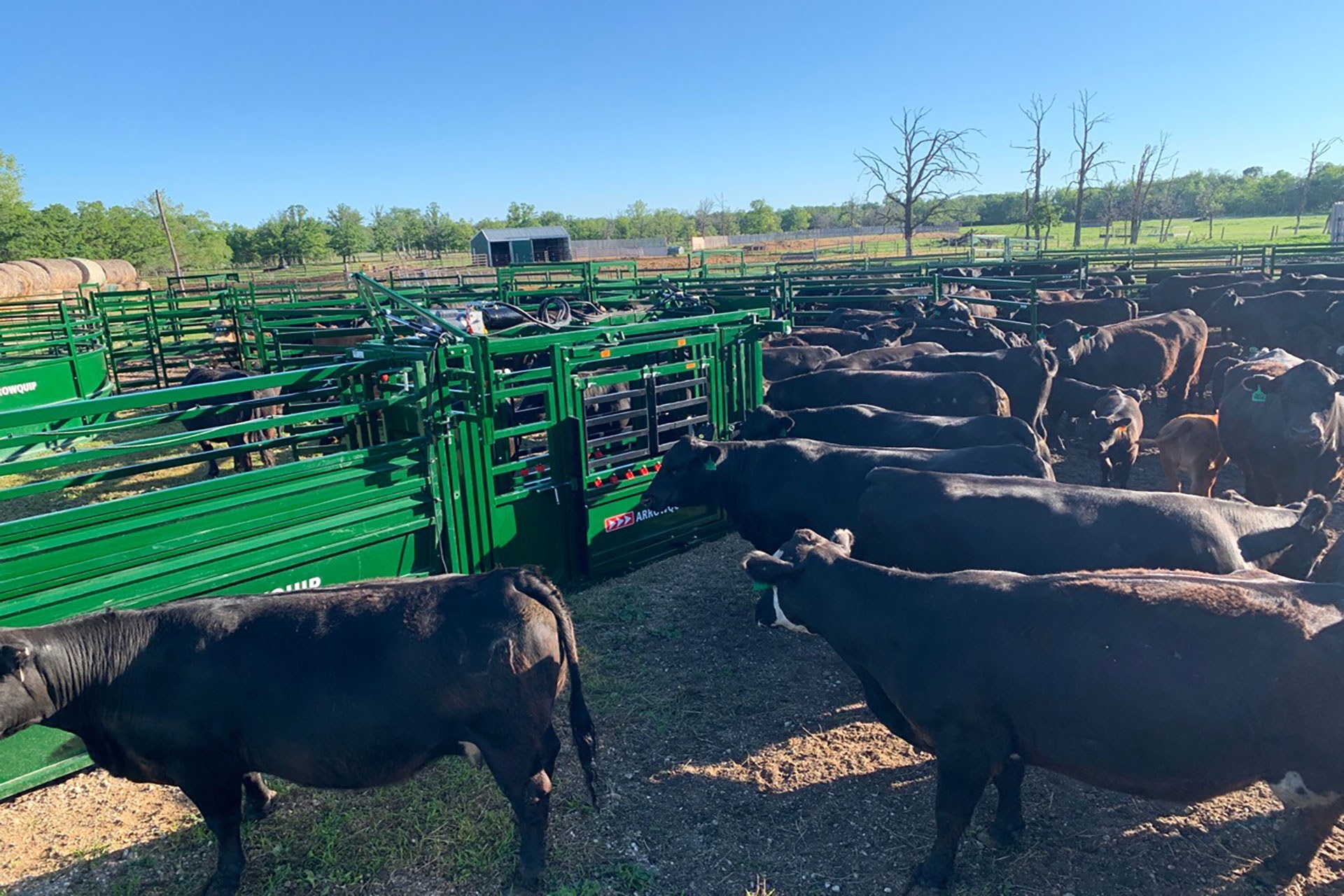What can Cow Calf Operations learn from Cattle Feedlots?
How feedlot-proven design principles can improve flow, reduce stress, and increase efficiency in cow-calf operations.
Go Back to All BlogsPosted on: November 23, 2020
Updated on: December 27, 2025
Author: Dana Charban
SHARE:
Flow is defined by Merriam-Webster as "to proceed smoothly and readilyÀ and is a practice that cattle feedlots have adopted in their handling systems to maximize efficiency as animals move into and out of the feedlot. There are a variety of notes that cow/calf operations can take from the way feedlots process animals to create a low-stress and highly effective operation.
Start with a Plan
The purpose of feedlots is to bring cattle in, sort them into groups, finish them, and then move them back off the feedlot for processing. As such, cattle are constantly being handled and the workers are able to adapt and try different handling techniques that help them to maximize efficiency.
One design that works very well to create flow and draw is an S-Flow handling system. It is an efficient design for drafting large groups of cattle and loading them into trucks. Both of these chores take place frequently have in cow-calf operations, but can be a pain due to the limitations of our handling facilities. An S-Flow design works because cattle instinctively follow the curves, which maintains movement while you are handling the herd.
Cattle handling systems at feedlots are designed around the following concepts in mind:
Establish flow. To minimize the likelihood that cattle will balk or turn around. One of the best ways to establish flow is with a curved cattle-handling system such as S-Flow.
Use the curves to your advantage. If the curves in the cattle handling system are not designed correctly, they will inhibit cattle flow. Curves that are 180 degrees can work well because the cattle think they are going back to their starting point. If a curve is too tight cattle will think it is a dead end. A tub that has a ¾ circular design is an easy way to add curves to a handling system.
Sight lines. Cattle need to be able to see at least three body lengths into the curve to feel comfortable and safe traveling into it.
Strategic lighting. Use light to your advantage in the system. Cattle are drawn to the light, so it is in your best interests to make sure it comes through in the area where you want cattle to go. Low-sheeted panels allow light to enter the system but maintain the security and safety needed for working cattle. They also allow the cattle to see other cattle, and that works within their herd instinct.
Place gates strategically. Adding gates into your cattle handling system offer additional flexibility, and can actually improve flow when used correctly. Think about where the best places to include alley gates are in your system, such as in a single section of alley behind the chute to prepare the animal for processing.
Minimize distractions. We have covered the basics of animal science in previous articles. It is always important to keep animal science in mind, as failure to acknowledge animal behavior and natural tendencies can impede flow.
Use low-stress cattle handling techniques. As with animal science, low-stress cattle handling should always be used to ensure animal welfare and proper flow.
Guide the cattle into the chute or ramp. An S-Flow cattle-handling system will gently guide the cattle forward in a continuous flow until they reach a chute or ramp. A heavy-duty chute or ramp should be used since this area receives a lot of pressure from the cattle and is where handlers will have the most interaction with the cattle. The equipment used in this area should also follow the best practices for low-stress cattle handling. Make sure there is enough light and no distractions at the entrance to the chute or ramp.

Adapt as Needed
Mistakes are easily made when designing any cattle handling system. Changes can be made once the issues with a system have been identified. A common mistake in feedlots and cow-calf operations is creating a dead-end. Curves that are too tight in a system, or alleys that connect at a sharp angle are referred to as a dead end because they will stop the flow of cattle. Adjusting the angle to 180 degrees and allowing cattle to see three body lengths in front of them will eliminate the dead end and restore flow to the system.
Size Matters
Handlers are often challenged when the crowd pen is too big or too small. Either situation will hinder flow. The radius needed depends on the size of the herd and the area where the system is located. One way to eliminate this problem is to purchase a tub and alley. Trying to design a curved system for a small area can prove challenging. If the system is being placed inside a building, consider adding translucent panels to the walls or roof to increase the natural light in the space and minimize shadows from artificial light.
Find your Flow
Focusing on the key elements of flow and draw make a cattle handling system more efficient. Spending time to become familiar with the way cattle are handled in feedlots can be used to significantly improve our cow-calf operations. A little research about these highly productive cattle operations can go a long way to improve the flow, efficiency, and overall effectiveness of any cow-calf operation.
References
Cattle Behaviour and Handling Facility Design For Feedlots
Directions for laying out curved cattle handling facilities for ranches, feedlots, and properties